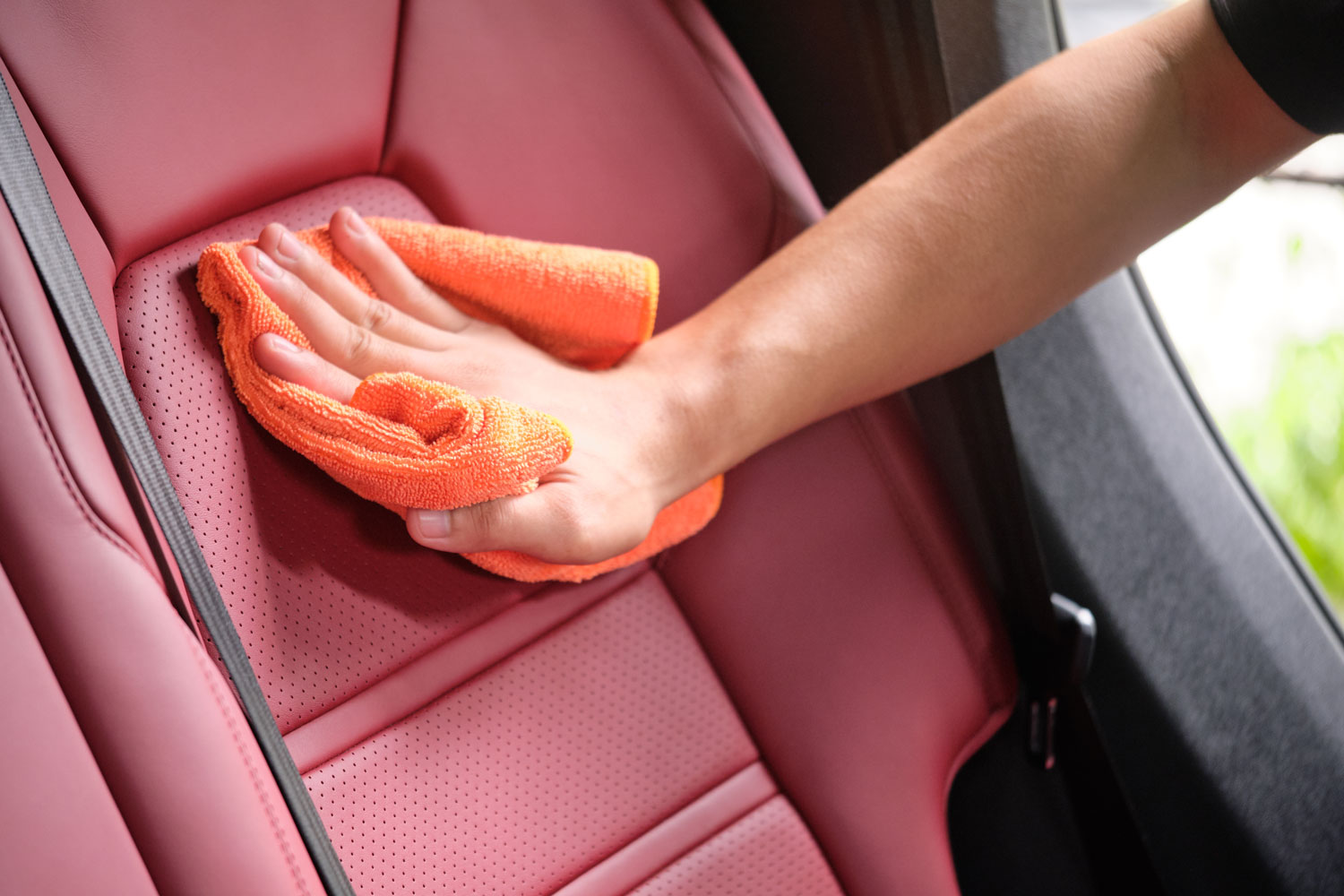How to Clean Your Car’s Leather Seats
Using the proper cleaner and conditioner can bring your car’s leather seats back to nearly new.
 Shutterstock
Shutterstock
Cleaning and caring for leather car seats can both improve the appearance of your vehicle's interior, and help preserve and protect it over the long term. Regular cleaning can keep leather soft and supple, prevent cracking, and remove any grime or odors that might have accumulated during everyday driving.
How to Choose a Leather Upholstery Cleaner
Basic spills on leather can be cleaned up using a mixture of warm water and vinegar, soaked into a damp cloth. But if you're going for a deeper clean, you will want to use a more specialized product. Leather is an organic material, which means cleaning products formulated for it contain moisturizers to prevent it from drying out and don't make use of harsher, damaging chemicals.
Plenty of leather cleaning kits are available, which typically break down into a cleaner and a conditioner. Conditioner is applied after the cleaner is used to introduce additional moisture that might have been removed while scrubbing. You may also see combination products that include conditioner and cleaner in the same bottle. Look for names like The Chemical Guys, Lexol, and Meguiar's. Each has a solid reputation among detailing professionals.
How to Clean Your Car's Leather Seats
A key first step in the leather cleaning process is using a vacuum to remove any surface dirt or dust that might have accumulated on the seats, as wiping it across upholstery while cleaning could leave scratches.
Next, spray the cleaner onto a microfiber towel (not directly onto the seats), and apply it gently to the leather using a buffing motion. Don't use too much product, as you don't want it to soak deep into the leather (especially if the leather is perforated), and make sure you fold back the seat as flat as possible to get into every nook and cranny.
If you still see some tarnished areas on the upholstery after the first pass, you can apply a second time with the towel and then use a soft bristle brush or sponge (included in some kits) to apply more pressure. Wipe away any leftover cleaner when you're done.
Protect Your Work
Once the seat is dry, it's time to apply the leather conditioner. The process is similar to the cleaning process in that you put a dab of conditioner onto your microfiber, then work it carefully and softly into the leather upholstery. A little goes a long way, so don't overdo it.
Before buffing the seats with a clean microfiber, some conditioners must be left on the surface for an hour or so in a cool location away from direct sunlight. A conditioned leather seat will provide additional protection against cracking from ultraviolet sun rays or use.
You'll want to clean your seats at least seasonally — twice a year, in the fall and the spring. If your vehicle sees a lot of use, you might want to up that to once a month to stay on top of any stains or grime built-up. You don't necessarily have to condition every time if the upholstery doesn't look or feel as though it is drying out.
Written by humans.
Edited by humans.
 Benjamin Hunting
Benjamin HuntingBenjamin Hunting is a writer and podcast host who contributes to a number of newspapers, automotive magazines, and online publications. More than a decade into his career, he enjoys keeping the shiny side up during track days and always has one too many classic vehicle projects partially disassembled in his garage at any given time. Remember, if it's not leaking, it's probably empty.
Related articles
View more related articles